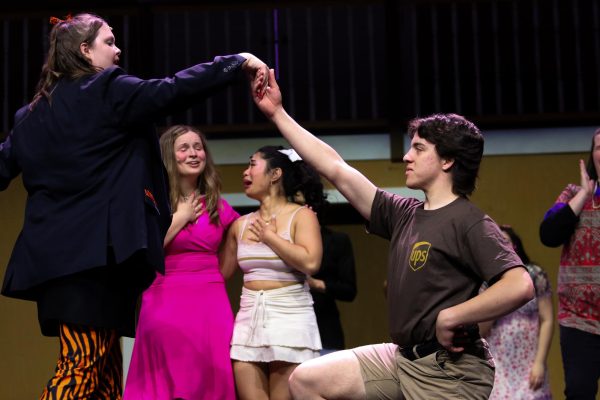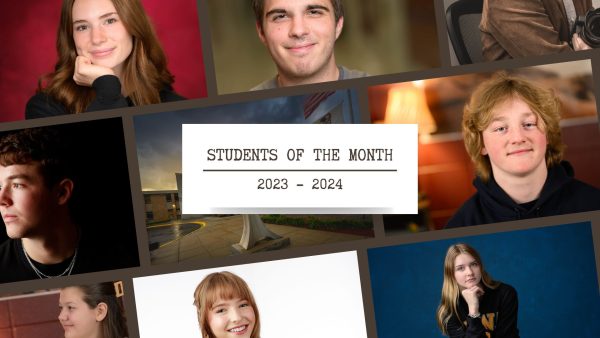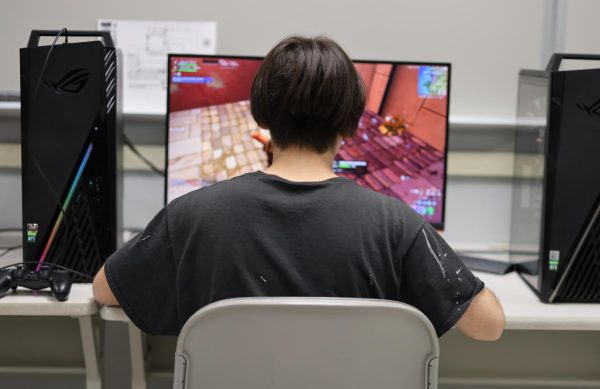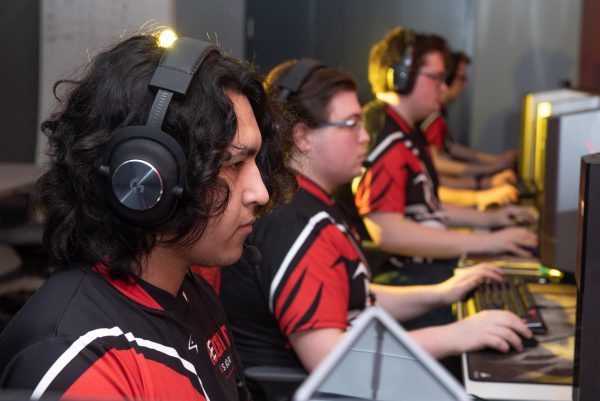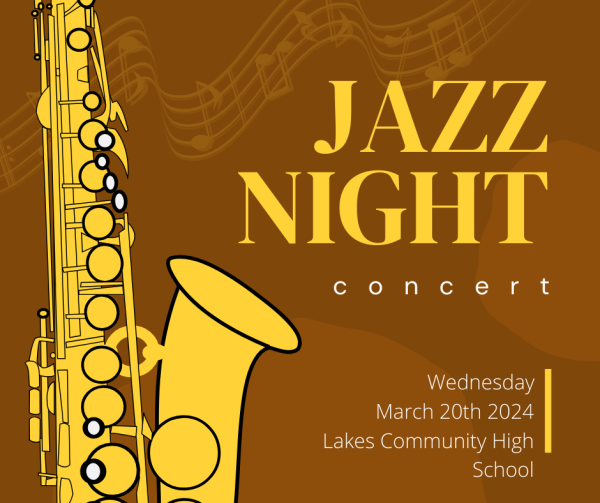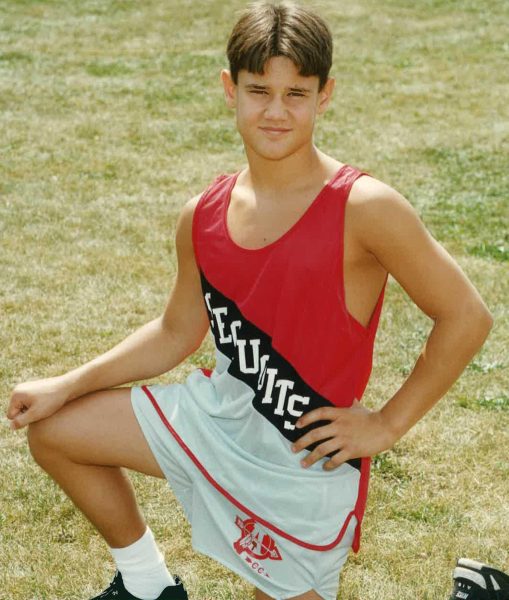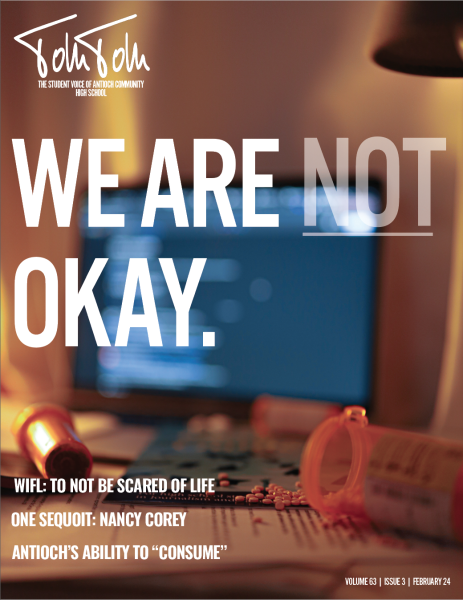The Evolution of School Dances
Dances once used to be clean and classy, now they are a big mosh pit of grinding. What will the future of school dances possibly hold?
PAST:
In the younger days of ACHS, students would dance side by side bumping hips or spinning in circles. This style of dance was seen as outrageous to parents of the time. Long dresses, slimming to the body was seen as being seductive to men. As the live band played, students came just to have pure fun, in today’s standards, in a more appropriate manner.
History, especially with dance, seemingly repeats itself. According to art teacher Toni Leprich, dance is something that had the power to cause an uproar, but also an opportunity to have fun.
“We never really had a DJ come play music for us in the late 70’s. It was always live bands like “Styx” or similar music to Led Zeppelin, Beatles, Beach Boys, etc. It was not the type of music to grind to. You simply just danced with your friends in a line or circle with your hands in the air, jumping around, or bumping hips together. Coming into 1978 or 1979, you would have seen more disco at dances,” said Leprich. “If parents or grandparents saw how we danced they probably would have been outraged, but it was the ‘norm’ to us students. I am sure it is the same for students. At some schools, it was a set number to be a certain distance apart and where your hands had to lay. Each generation has a different aspect about dances. If we had parents chaperones, would the dancing change? For most people, probably not, but I know a lot of students would not attend if their parents were there watching.”
PRESENT
At Antioch Community High School’s homecoming and turnabout dances, students walk into the doors of the fine arts hallway. Each student is instantly inspected by the chaperones. Many students are asked questions like “How short is that dress? What is in that bottle? What do you have in your purse?” However, students continuously disappoint the chaperones each year because when one mishap occurs, everyone else is stereotyped by that one mistake. However, ACHS is very lenient with the rules following school dances compared to schools surrounding the area.
“There have been some schools who give out two different color wrist bands. If one gets taken away, it is a warning. If both get taken away the student would be escorted out of the dance,” student council adviser Laura Tielke said.
Tielke has to follow the rules of the school and try to keep the students satisfied for three plus hours. Her goal is to make all school dances memorable for a special purpose.
“[School dances] are a lot of fun and it is always a great time when you are with your friends. The teachers do a pretty good job keeping the dances sane,” senior Dakota Daniels said.
Keeping dances sane is one of the hardest parts for teachers and administration.
Tielke said, “Some girls look like dogs in heat. It is repulsive. I do not understand how that could be having ‘fun’ at a dance. Girls dancing with girls are never a problem, but as soon as you get a boy and a girl, they take things way too far.”
Tielke is unaware how and why grinding began, but she isn’t a fan.
“No idea. Maybe a rock star mentioned it and then grinding became a nationwide thing,” said Tielke.
Daniels thinks grinding evolved much like any other dance, a change of the times.
“If I had to take a guess, grinding probably started in the early 2000’s because of it being a new century, students decided that dances had to take a turn as well,” said Daniels.
Leprich believes the change of music style is what drives the transition in dance.
“As I’ve witnessed dances over the past years, it is that as the music changes, the dancing changes; the more seductive dresses girls wear, the more dancing becomes intimate,” Leprich said. “Honors students, my most innocent students, they are all grinding. Grinding is even starting to get junior high schools.”
Dances in the present can be seen similarly to an R-rated movie. Students have a hard time drawing the line on how they dance. Students never think about their reputation or the image they are giving other acquaintances attending the dance. Junior high students are also starting to grind due to the influence of their “role models.”
Is grinding really how 10, 11 and 12 year olds should be dancing?
“Girls are being disrespectful to their bodies. They flaunt what they have because they want to be competitive to all the other girls at the dances. Boys do not respect their girlfriend’s bodies as they are shaking their junk,” said Leprich. “Girl’s dresses move up inch by inch for everyone else to see. If I was a boy, I would want my girlfriend’s body to be private and well clothed because that is not something I want my friends to see.”
Teachers and students alike believe there needs to be a line drawn for students and how they define the word “fun.” The only way school dances will change is if the students change the definition themselves. Since dances evolved from concerts and dirty dancing to grinding, what could possibly be next?
FUTURE:
So, if grinding could become more sexual, how will students at ACHS feel?
According to a recent survey conducted by the Tom Tom, 20 percent of students at ACHS believe dances will go down hill and will become more intimate as time goes on. Three students wish to see dances going back to the 70’s, with a lot of swing dancing.
If dances go in the way of the majority, will students still consider going to school dances?
Forty-eight percent of students said they would not attend the school’s dances if they become more intimate, leaving 52 percent being fine with going. However, students also emphasized the fact that if they were not forced by their peers to grind, that they would dance differently and still have a great time.
“Dances are so provocative now that I cannot imagine it getting any worse,” Tielke said. “It is hard for me because being the school council adviser, I have to let it take it’s own course and still try to set some boundaries for students.”
It gets to a certain point that as a society, everybody must know the limitations. Grinding at a wedding with mostly family attending is a very inappropriate scene. Dances became overly intimate can cause many problems and accidents. Administration in the future could certainly upset the next teenage generation by either getting rid of dances or draw a line on grinding rules. Dances could be nonexistent from lack of participation if administration sets rules. Grinding already turns away teenagers to even consider showing up. It is certainly awkward for teachers to approach students as well.
Should an English teacher really see their student’s spandex underneath their dress? As a whole, that is what student’s at dances are showing. As a generation, it is important to think about how promoting grinding and twerking could destroy future mindsets.
School dances are just the typical norm that the next generation just cannot seem to comprehend. Hopefully, ACHS’s hypothesis changes to something more positive where everyone can have fun and feel comfortable enough to participate.



